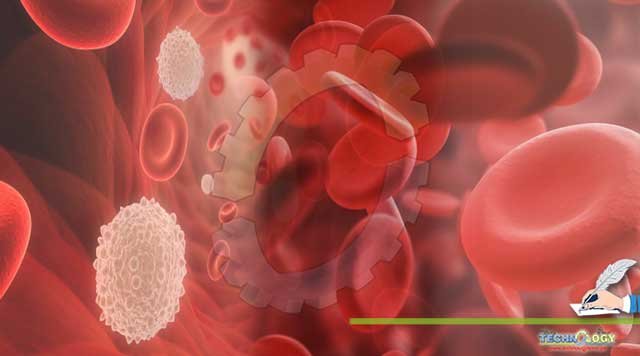Leukemia is the cancer of blood cells, usually white blood cells which fight and clears infections. It is also known as cancer of blood-forming tissues i.e lymphatic system and bone marrow. It is usually characterized by greatly increased numbers of abnormal white blood cells in circulating blood. It is a very serious disorder and the patient needs to change the blood regularly with normal blood from donors.

How does leukemia develops?
Our blood contains many different types of cells. These include red blood cells, white blood cells, and platelets. These cells are made on daily basis in the bone marrow. Leukemia happens when the body starts making white blood cells beyond its need. Immature white blood cells are released in the blood and these are non-functional. Moreover, as white blood cells increase in number, the number of red blood cells and platelets are not enough to maintain a healthy life and perform their normal functions.
Types of Leukemia
Leukemia has four main types
- Acute Lymphocytic Leukemia
- Chronic Lymphocytic Leukemia
- Acute Myelogenous Leukemia
- Chronic Myelogenous Leukemia
In the acute form of leukemia, cells multiply quickly in the bone marrow and enter the circulatory system too early but these cells are immature and non-functional. Chronic leukemia occurs when marrow produces mature cells and it progresses more slowly than other forms.
Lymphocytic leukemia is a type with an accumulation of apparently mature dysfunctional lymphocytes. Normally lymphocytes differentiate to form B-cells, T-cells, and natural killer cells which are the backbone of the immune system. Myelogenous leukemia is a cancer of white blood cells usually granulocytes and monocytes. Either it is lymphocytic or myeloid, leukemia results in a compromised immune system, and the body cannot protect itself from different infections.
Acute lymphocytic leukemia(ALL) It is most common in children. It can spread to the central nervous system.
Acute myelogenous leukemia(AML) It is the second most common type of leukemia in children and also common in adults.
Chronic lymphocytic leukemia It is common in adults. This remains stable for many years but in some types, patients need treatment.
Chronic myelogenous leukemia(CML) Older people may are at higher risk for this type of leukemia.
Risk Factors
Some significant risk factors that can cause leukemia
- A genetic predisposition
- Down syndrome
- Human T-lymphocyte virus (HTLV)
- Human immunodeficiency virus (HIV)
- Exposure to petrochemicals like benzene
- Long term exposure to artificial ionizing radiation
- Alkylating chemotherapy agents used for the treatment of other types of cancer
- Family history
Symptoms
Various types of leukemia can cause different symptoms. These symptoms usually not appear in the early stages, but they may include;
- Fatigue or weakness
- Bruising or bleeding easily
- Fever, headaches, and vomiting
- Severe infections and pain in bones
- Weight loss and night sweats
- Shortness of breath
- Swollen lymph nodes and organs like the spleen
Diagnosis of Leukemia
CBC: with a blood test doctor looks at several different blood cells and their maturity. Immature cells may appear in the blood.
Bone marrow biopsy is done by taking bone marrow. With help of this doctor check the type and severity of leukemia.
CT scan and MRI are also done for the diagnosis of leukemia.
Treatment of Leukemia
Depending on the type of leukemia and its spreading, a doctor may look for the following options:
- Radiation
- Chemotherapy
- Targeted therapy
- Stem cell transplant
- Surgery
In a radiation treatment, high energy X-rays are used to kill leukemic cells. But normal cells are also affected.
In chemotherapy, different drugs are given to kill leukemic cells in blood and bone marrow. This may include a pill or injection in muscle or vein.
Targeted therapy is done to block the expression of some genes or proteins that are involved in the production of cancerous cells.
A Stem cell transplant involves a bone marrow transplant from a healthy donor. In this method, high-dose chemotherapy is done to destroy the leukemic cells of a patient. The healthy stems cells of donor are then injected to body.
Splenectomy is the removal of spleen and doctor may look for this option if spleen becomes fills with cancer cell and start affecting other body organs.
Preventing or reducing the risk of leukemia
Unfortunately, there is currently no cure for leukemia. Minimum exposure to pesticides and radiations may help to reduce the risk of leukemia. Leukemia can also be prevented by avoiding tobacco.
One can lower the risk of developing leukemia by following:
- Do not smoke
It is the best way to lower the risk of leukemia.
- Eating Well
Studies have shown that overweight and obesity are also contributing factors to increasing the risk of developing leukemia.
- Avoid benzene exposure
Pollution, gasoline, car exhaust contains low levels of benzene. It is also found in offices and homes and found in paint, glue, etc. wearing a mask while using these may help you lower the risk of exposure.
- Avoid radiation
Medical radiations like x-rays increase the risk of leukemia. Try to avoid unnecessary radiation exposure.
- Maintain a healthy lifestyle
Your body and mind function at their best with a healthy diet. Proper nutrition provides energy fuel for body functioning, it also strengthens the immune system.
- Do exercise regularly.
- Eat more fruits and vegetables.
- Do not eat high-calorie food to avoid obesity.
References:
- Leukemia (Overview) – Harvard Health. https://www.health.harvard.edu/a_to_z/leukemia-overview-a-to-z
- Leukemia: Causes, Treatment, And Early Signs. Medicalnewstoday.com. https://www.medicalnewstoday.com/articles/142595
- Leukemia Treatment, Diagnosis, Causes, Symptoms & Prognosis. https://www.medicinenet.com/leukemia/article.htm
- Awareness and Prevention | Leukemia | UT Southwestern Medical Center. https://utswmed.org/conditions-treatments/leukemia/leukemia-awareness-and-prevention/
- Overview of Leukemia – Hematology and Oncology – MSD Manual Professional Edition. https://www.msdmanuals.com/professional/hematology-and-oncology/leukemias/overview-of-leukemia